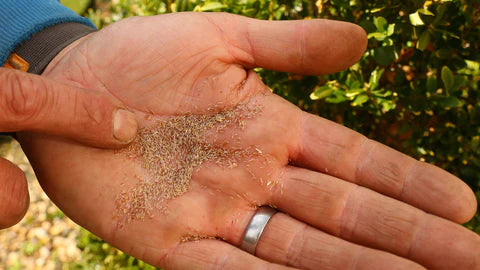For lawn enthusiasts the changing seasons bring with them a unique set of challenges and considerations. While winter blankets our landscapes with a beautiful layer of snow and ice it's crucial to resist the temptation to step onto your lawn. In this blog post, we'll explore the reasons why standing on your lawn in snow and ice might not be the best idea and how this simple act can have lasting effects on the health and beauty of your grass.

1. Protect the Roots:
Underneath that picturesque winter scene lies the delicate network of grass roots that sustain your lawn throughout the year. When you stand or walk on your lawn in snow and ice you risk compacting the soil which can compress the roots and limit their ability to absorb nutrients and water. Compacted soil also reduces the oxygen supply to the roots hindering their overall health.
Snow may seem fluffy and light but when you step on it the pressure can compact the snow layers turning them into a dense, icy surface. This compaction can have detrimental effects on your lawn causing soil compaction that restricts the movement of air, water, and nutrients. This lack of essential elements can result in poor grass growth and vitality come spring.
2. Prevent Winter Kill:
Your lawn may appear dormant during the winter but the grass is still alive and its cells are active. Walking on a snowy or icy lawn can cause the grass blades to break creating entry points for diseases and pests. Walking across a frosty lawn breaks the blades of grass (which is why you hear that crunching noise), so it's best to keep off the lawn if there is a frost present. This damage, known as winter kill can lead to unsightly brown patches and weakened grass when the snow finally melts.
3. Maintain Aesthetic Appeal:
Lawn enthusiasts take pride in the lush green carpet they've cultivated. Standing or walking on your snowy lawn can leave footprints and disrupt the uniformity of the snow cover, compromising the pristine winter beauty of your outdoor space. Preserving this aesthetic appeal not only contributes to the overall visual charm but also helps maintain the health of your grass.

4. Long-Term Impact:
The effects of standing on your lawn in snow and ice might not be immediately noticeable, but they can accumulate over time. Compacted soil and damaged grass can result in long-term issues, leading to a weakened lawn that struggles to recover in the following growing seasons.
Get rid of any leaves
In addition to steering clear of walking on frosted grass experts emphasise the importance of clearing fallen leaves (when the ground is not frosty) to prevent them from becoming habitats for wildlife. Although the winter season may bring a sense of tranquillity to the garden, there are still various outdoor tasks to attend to.
You should be regularly sweeping up fallen leaves and debris from the grass surface using a gentle rake or brush throughout the winter- you may not want to be going on it with a mower and scarifier cartridge in the winter. Leaves accumulate excess moisture that can saturate the grass and contribute to lawn diseases like Fusarium Patch.
Consider repurposing the collected leaves as mulch around trees and other plants to retain moisture during dry periods.
Do not get salt anywhere near your lawn




Leave a comment
This site is protected by hCaptcha and the hCaptcha Privacy Policy and Terms of Service apply.